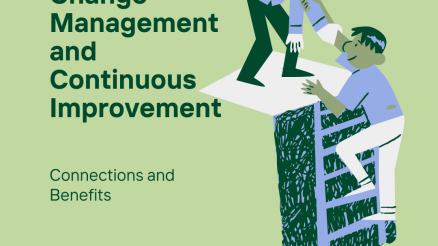Enterprise Resource Planning (ERP) systems have become an indespensible tool for today’s fast-paced and competitive business environment.
By integrating various business processes, such as finance, supply chain, and human resources, ERP systems help organizations streamline their operations, reduce costs, and improve decision-making.
On research study reveals that a successful ERP implementation may improve company operations 95% whereas it reduces operational and administrative cost by over 20%.
In this blog post, we will take a closer look at 10 successful ERP implementation examples across various industries, including automotive, consumer goods, retail, healthcare, and pharmaceuticals.
These organizations have leveraged the power of ERP systems to enhance their performance, improve customer service, and achieve a competitive edge.
What is ERP Implementation?
ERP implementation refers to the process of introducing an Enterprise Resource Planning (ERP) system into a business organization. The goal of ERP implementation is to integrate various business processes, such as finance, supply chain, human resources, and operations, into a single, unified system that streamlines and automates key operations.
ERP implementation is a complex and multi-faceted process that typically involves the following steps:
- Planning and preparation: This stage involves identifying the business needs and objectives, determining the scope of the project, and creating a project plan.
- Selection and procurement: This stage involves choosing an appropriate ERP software solution and negotiating with vendors for licensing and support.
- Configuration and customization: This stage involves setting up the ERP system to meet the unique needs of the organization, including customization of features, processes, and data structures.
- Data migration and integration: This stage involves transferring data from legacy systems to the new ERP system and integrating it with other systems and databases.
- Testing and training: This stage involves thorough testing of the ERP system to ensure that it is working as expected and training employees to use the new system.
- Deployment and go-live: This stage involves rolling out the ERP system to all departments and users, and making it live for use.
- Maintenance and support: This stage involves ongoing maintenance and support to ensure the ERP system continues to work effectively and to address any issues that arise.
ERP implementation can be a complex and time-consuming process. It has its own advantages and disadvantages but the benefits can be substantial, including improved efficiency, cost savings, and enhanced decision-making capabilities.
10 Successful ERP Implementation Examples
Following are 10 ERP implementation examples from different industries
1. TD Bank Group
TD Bank’s migration to a cloud-based framework prompted its partnership with Microsoft for Microsoft Azure ERP. As one of its biggest challenges, TD Bank Group focuses on improving digital storage and customer experience.
By leveraging Microsoft Azure, TD Bank will integrate Office 365, leading to various advantages such as:
- Improved derivative pricing and risk management for TD Securities
- Integration of its proprietary data and analytics database for cross-bank reporting
- Integration with AI advancements through its subsidiary, Layer 6
- Increased opportunities for managing TD Bank customer relationships and enhancing their digital experiences.
2. Amazon
Amazon.com is a technology giant that focuses on e-commerce, cloud computing, digital streaming, and artificial intelligence. The company has implemented SAP as its ERP (Enterprise Resource Planning) solution, which plays a crucial role in managing the various assets and operations of the company. SAP’s financial accounting and invoice verification capabilities are particularly valuable for Amazon, allowing the company to track its finances and assess its needs.
In addition to financial accounting, SAP’s ERP solution also helps Amazon manage its inventory, logistics, human resources, order management, and sales. This comprehensive approach to managing the various functions of the business has helped Amazon maintain its position as a global leader in e-commerce. The solution offers sellers a unique opportunity to keep track of their sales, retain customers, analyze profit margins, and improve the overall shopping experience for buyers.
The ERP solution offers a user-friendly interface with a variety of options, including an interactive analysis tool, product information, MRP, service, human resources, and customizable reports. This provides Amazon with the necessary insights and data to make informed decisions and continue its growth as a technology and e-commerce leader.
3. N&N Moving Supplies
N&N Moving Supplies, a family-owned supplier of moving equipment, streamlined its business operations with the implementation of an ERP system. As the company grew from one location in Georgia to three locations across multiple states and increased its workforce, the previous accounting and payroll systems on QuickBooks and a third-party provider became increasingly difficult to manage.
To address these challenges, N&N chose NetSuite ERP and worked with a partner, NOVAtime, to integrate a time-clock solution. This collaboration resulted in significant improvements, including:
A 84% reduction in payroll processing time. Quicker account reconciliation. Greater accuracy in tracking hours and vacation time. The ability to monitor labor-cost trends across all three locations. Providing employees with personal ERP dashboards accessible through iPads on-site.
The success of N&N Moving Supplies in implementing their ERP system highlights the importance of managing employee morale. Many ERP implementations fail when employees do not feel a sense of ownership in the project. N&N was able to sidestep this issue by offering personalized dashboards and explaining the benefits to employees before the implementation.
The case study also demonstrates the value of working with a third-party partner. A partner can tailor the ERP system to the unique needs of the company, as was seen with N&N’s collaboration with NOVAtime
4. Starbucks
Starbucks Corporation, a renowned chain of coffeehouses and roastery reserves, utilizes Oracle ERP, a cloud-based software system that streamlines back-office tasks and daily business operations.
With the support of Oracle E-Business Suite, Starbucks has access to integrated Customer Relationship Management (CRM), Enterprise Resource Planning (ERP), and Supply Chain Management (SCM) functionalities. Oracle ERP enables Starbucks to analyze revenue data, view expenses and sales information, all on a single screen. This centralized system provides convenient and quick access to crucial business information
5. Walmart
Walmart Inc. is a leading American retail corporation that operates a vast network of hypermarkets, discount department stores, and grocery stores across the United States. With a market capitalization of over $500 billion, Walmart is among the largest corporations in the country. The company’s sales are roughly double those of its closest retail competitor, Amazon.
In 2018, Walmart entered into a five-year partnership with Microsoft for the deployment of Microsoft Azure, a cloud-based platform that supports multiple ERP systems. The partnership aims to bring the benefits like integration with cutting-edge block chain solutions; more efficient e-commerce opportunities; integration of existing ERP programs into Microsoft Azure platform; development of a cloud-based enterprise system; improved automation of warehouse operations and use of AI to manage supplier relationships.
Thanks to its current ERP system, Walmart has a competitive edge in technology. The system enhances supply chain management efficiency and strengthens integration and collaboration with suppliers. Furthermore, it helps the company improve worldwide management efficiency, further solidifying its position as a leader in the retail industry
6. Cadbury
Cadbury, a 123-year-old British confectionery company, is now owned by the American snack foods giant Mondelez International. Despite its rapid success, the company faced difficulties in fulfilling its manufacturing and distribution needs. To address these issues, SAP was brought in to overhaul the supply chain, including a redesign of warehousing and distribution procedures.
The planning phase of the ERP adoption required frequent modifications and close collaboration between Cadbury’s management and the ERP vendors. Despite the lengthy process, it provided the company with a comprehensive real-time view of the core business.
The ERP implementation brought about significant improvements for Cadbury, including improved warehouse management, increased efficiency, and rapid expansion. The best-in-class vendors and their proactive decision-making capabilities helped to streamline the process and minimize any issues during the deployment stage. The vendor’s efficiency also resulted in cost savings for the company. Choosing the right partner, like Zillancer, can provide a more convenient and streamlined ERP solution
7. The Hershey Company
Hershey’s is a globally recognized American chocolate manufacturing company, known for being one of the largest in the world.
In 1996, Hershey’s started its journey to modernize its outdated IT systems through an integrated ERP platform. The company chose to implement Seibel’s CRM software, Manugistics’ SCM, and SAP’s R/3 ERP software.
Despite a suggested implementation timeline of 48 months, Hershey’s aimed to have the systems up and running within 30 months, ahead of the Y2K deadline.
Unfortunately, Hershey’s busiest seasons for orders (around Halloween and Christmas) coincided with the ERP implementation, causing the team to cut back on crucial testing steps to meet the tight timeline. This led to unexpected problems and the systems’ inability to process orders, resulting in a loss of $100 million in Kiss and Jolly Rancher orders.
For any company considering or implementing ERP, Hershey’s experience provides valuable lessons. The two most important are to closely monitor the ERP schedule and to thoroughly test business processes and systems using a methodology that simulates real-world scenarios. Adhering to these recommendations will reduce the risk of failure and position a business for ERP success.
8. LG Electronics
LG Corporation is a well-known South Korean multinational conglomerate that specializes in home appliances and electronics. With over 114 subsidiaries, it is one of the most recognized brands in the world’s electronics industry.
However, consolidating HR data for global reporting was a complex, time-consuming, and costly task due to the use of different HR programs by its subsidiaries. This, combined with ineffective management practices, was hindering the efficiency of HR staff members.
In response to these challenges, LG Electronics decided to switch to a single, integrated ERP system to simplify HR administration and improve the company’s ability to recruit and retain top talent. The company was also facing difficulties in operating globally, due to the growth of manual procedures, improper resource utilization, and ineffective decision-making.
It took LG Electronics five years to successfully implement its ERP solution, but the benefits were significant. The company achieved increased transparency in the hiring and employee evaluation process, flexibility for regions to make changes locally with the centralized HR Management system, enhanced HR management through real-time access to information for senior managers, improved document sharing and learning among staff members, leading to time and cost savings, and boosted employee satisfaction with the introduction of self-service options.
9. Fulton & Roark
Fulton & Roark is a men’s grooming products company founded with the aim of offering products that cater to the needs of modern life.
Previously, the North Carolina-based company used a spreadsheet to manage its inventory and Sage Live desktop accounting software for its financial information. However, as the company’s revenues started to double annually, the leadership realized that the current processes were not keeping up with the growth.
The limitations of spreadsheets in accounting for fluctuating inventory costs and the lack of procedures in the accounting software to record the cost of goods sold, a vital financial metric, prompted the company to switch to a full-featured ERP.
The co-founders of the company decided to implement NetSuite ERP to centralize all their operations in one place. The implementation process took only three weeks and the results were immediate. The Fulton & Roark team was able to:
- Increase revenues by approximately 50% annually without adding more staff.
- Gain a clearer understanding of the margins and inventories that fueled the growth of its e-commerce business.
- Stop relying on external accountants and greatly increase both unit and dollar volumes without adding more personnel.
The success story of Fulton & Roark highlights the importance of having management support for an ERP implementation. In this case, the initiative was started by the co-founders, which experts say often leads to higher employee adoption. The company’s experience also shows that ERP rollouts do not have to take a long time, as their team was fully operational within just 20 days.
10. Green Rabbit
Green Rabbit had been facing a challenge when trying to ship chocolate bars that were prone to melting during the summer months. To overcome this, they created a heat-sensitive supply chain and soon, other food companies sought their help. Thus, they rebranded as Green Rabbit, a supply chain logistics provider that specializes in the fast delivery of perishable goods.
However, their new focus put their current processes to the test as they relied on QuickBooks, Excel, and email. Green Rabbit’s multiple databases were not able to communicate with each other, making real-time data analysis impossible. Additionally, the warehouse team often had to wait for assistance from the IT team.
To overcome these challenges, Green Rabbit implemented ERP and they were able to:
- ship their products and other perishable goods across the country within one day from one of its three warehouses without any delays
- deliver ten of thousand of orders every day
- generate error-free data from its ERP system
- have the capacity to manage three time higher volume of order without affecting their system
Through Green Rabbit’s successful ERP implementation experience, it is much easier to manage complex supply chain when when ERP is correctly implemented. And ERP is crucial for growth and further expansion of business.
Another important aspect is that ERP improves agility. For instance, after implementation of ERP, finance teams don’t need to spend hours on spreadsheets and paper records to analyse data and make decisions. Now they simply visualise date and forecast the future trends and adapt quickly to new situation.
Lessons Learnt from Successful ERP Implementation Examples
The successful ERP implementation examples of companies like Amazon, Walmart, LG, Walmart etc. demonstrate the significant benefits that can be achieved through the implementation of an ERP system. These companies have been able to improve their operations, increase efficiency, reduce costs, and improve customer satisfaction as a result of their ERP implementations.
From these examples, several key lessons can be learned. Firstly, it is important to have a clear understanding of the business objectives and needs that the ERP system is intended to address. This helps to ensure that the ERP system is tailored to meet the specific requirements of the company.
Secondly, it is important to choose an appropriate ERP software solution that is flexible and can be customized to meet the company’s specific needs. The ERP system should also be integrated with other systems and databases used by the company to ensure that accurate and up-to-date information is available to all users.
Thirdly, thorough testing and training are critical to ensure that the ERP system is working as expected and that employees are able to use the system effectively.
Finally, it is important to have a well-planned and executed implementation process to ensure the success of the ERP implementation. This involves close collaboration between the company and its ERP software vendor and careful planning and execution of each stage of the implementation process.
The successful ERP implementation examples of these companies demonstrate the significant benefits that can be achieved through the implementation of an ERP system. These lessons can be applied by other companies to help them achieve their own successful ERP implementations.



